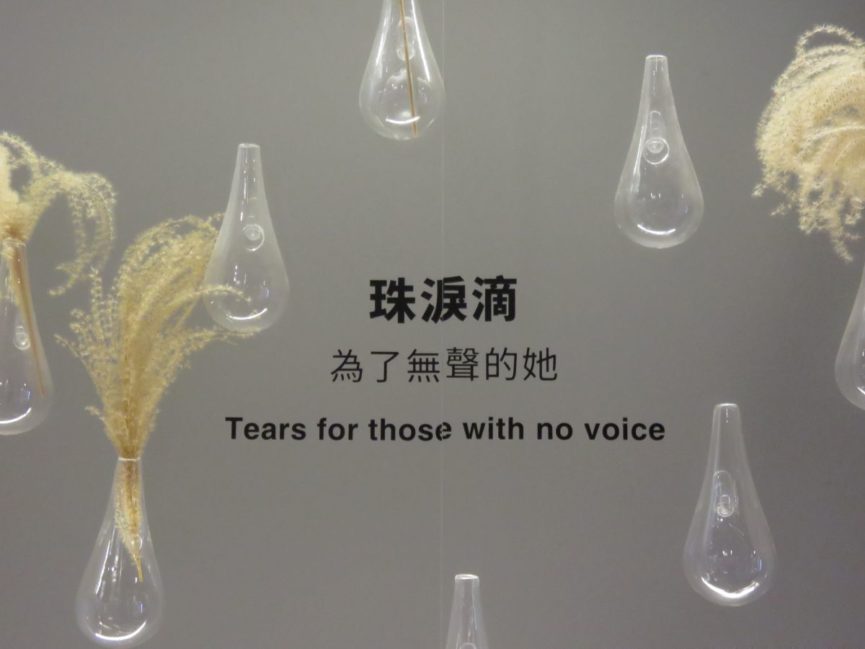Nestled in the heart of the Datong district in downtown Taipei is the small and unassuming Ama Museum.
This tiny museum dedicated to a small number of elderly Taiwanese citizens, who like this non-descript heritage building, have remained hidden from historical narratives for decades.
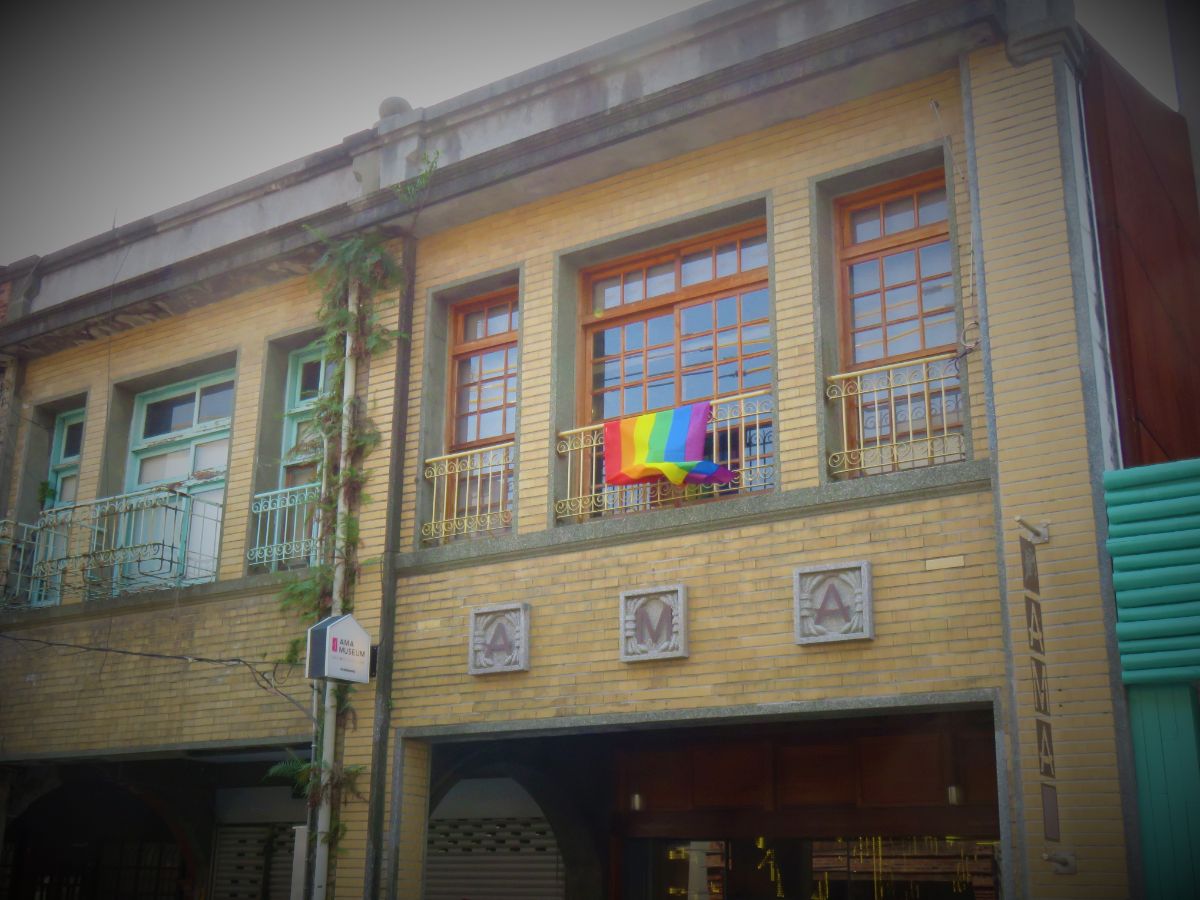
Now, both the building and the women whose stories it shares are being discovered, discussed and remembered.
Ama Museum: Transforming tragedy into resilience
The Ama Museum opened its doors in 2016 and has since become one of the most important women’s museums and centres in the world.
The Ama Museum tells the tragic and little known stories of the thousands of women that the Japanese Military kidnapped, forced or tricked into sexual slavery.
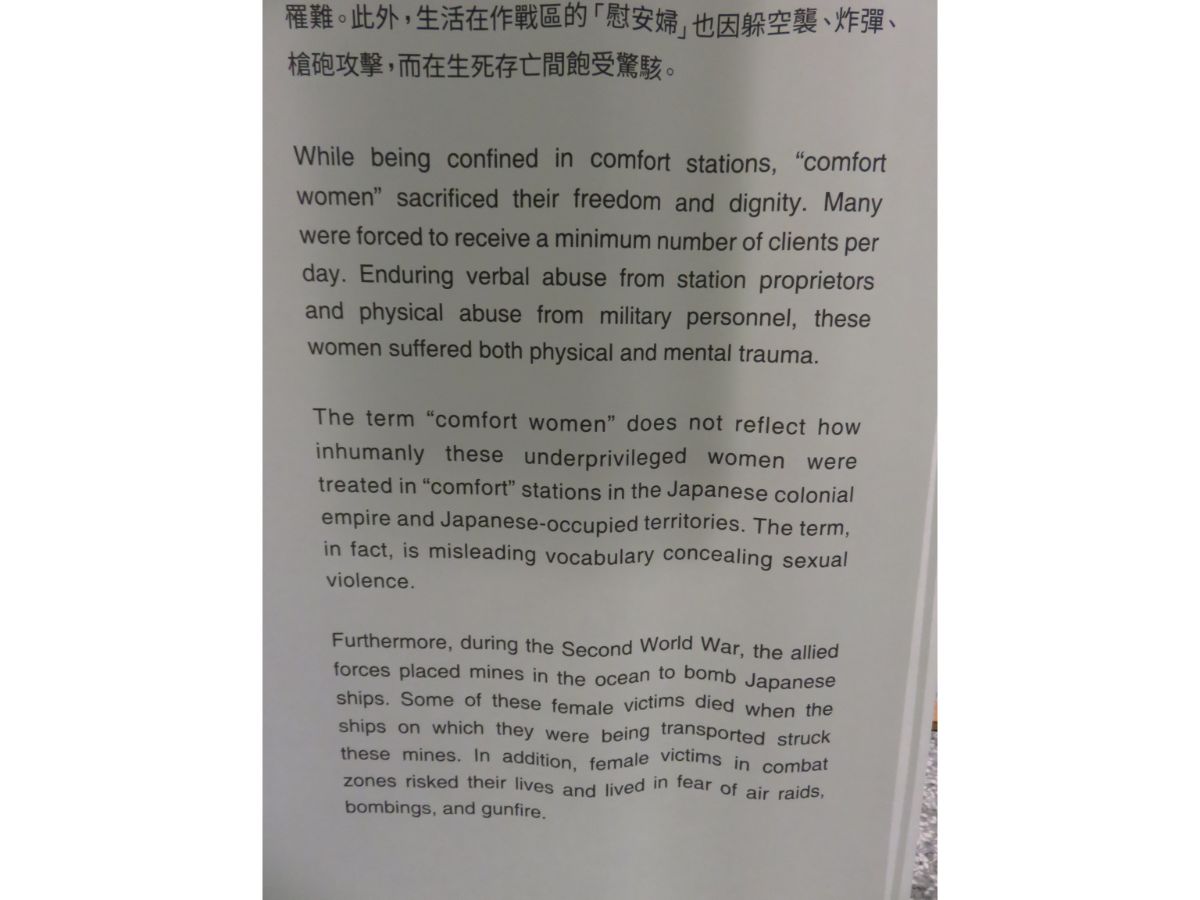
During their occupation of Taiwan and other parts of East Asia, the Japanese armed forces created ‘comfort stations’ where scared young women were forced to perform acts of ‘comfort’ for the Japanese soldiers.
Ama is the endearing name given to Taiwanese comfort women. It translates roughly as ‘granny’. It is fitting because many of the female survivors were well into old age before they spoke out about the dark days of the Second World War.
The creation of the Ama Museum
The Ama museum is dedicated to all the ‘amas’ who came forward and told their stories. It is also dedicated to all the women who never got a chance to heal. Those who took the secret to their graves. Especially those who did not live to experience life after the Second World War and during peacetime.
In 1992, the Taipei Women’s Rescue Foundation (TWRF) launched a campaign demanding reparations from the Japanese government for war crimes committed against women during World War II.
As well as advocating on behalf of the survivors, the TWRF also created a safe and welcoming place where women could come together to heal, remember and create. This is now incorporated into the museum itself.
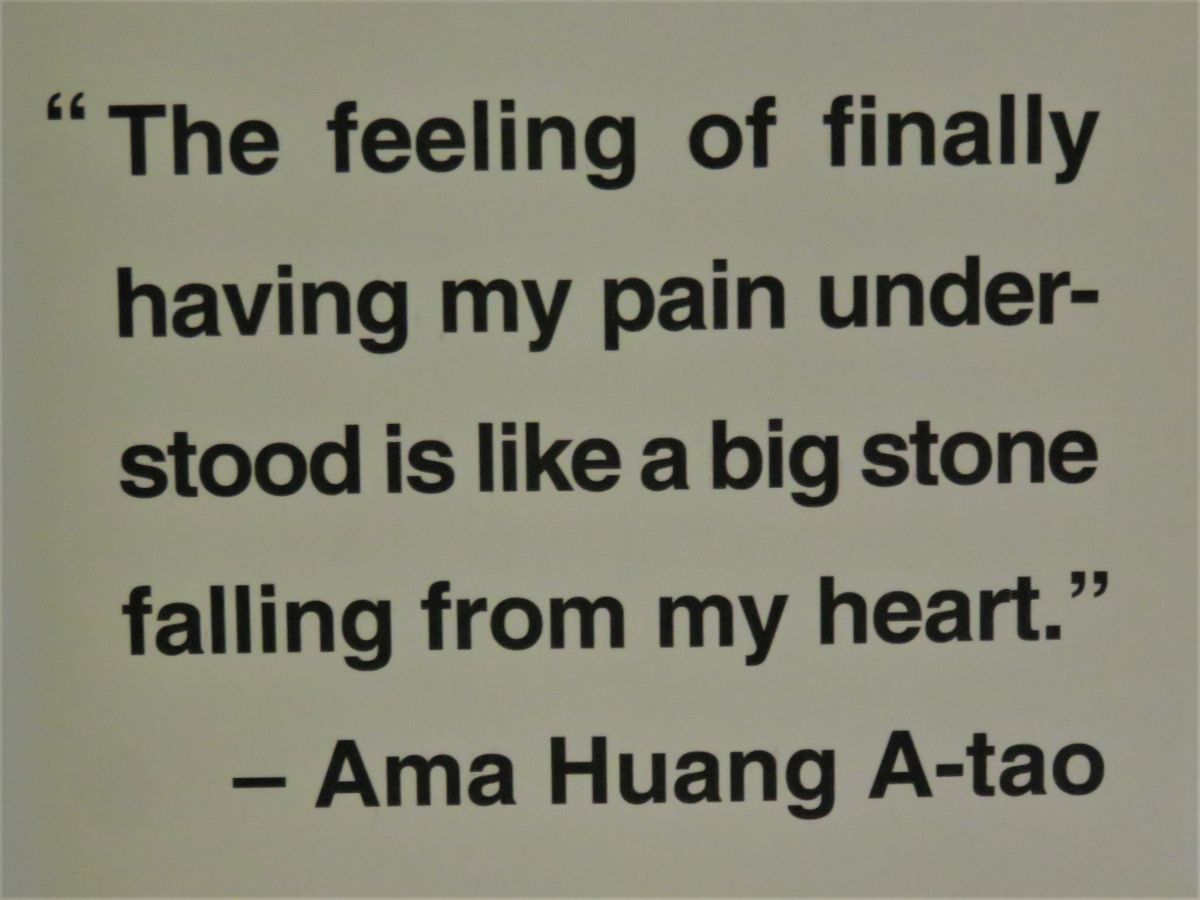
Although forgotten by most historical textbooks, the museum works hard to make sure that this awful period of history will be remembered, understood and never repeated.
“The Ama Museum bears witness to history. It is dedicated to the cause of women’s rights in our time. It seeks to transform trauma into resilience and find peace by mending the scars of history.”
Today the Ama Museum’s focus is as a base for social activism and education. It has become an important centre for the advancement of contemporary women’s rights and female empowerment around the world.
Other museums in Asia remembering the ‘Comfort Women’ from WWII
Last year, I visited the unforgettable War and Women’s Human Rights Museum in Seoul, South Korea. This incredibly moving museum opened up a part of women’s history and World War Two history that I hadn’t come across before: The story of the Japanese Army’s comfort women.
If you’re planning a trip to South Korea, click here to find out more about this amazing women’s museum:
Why you MUST visit the War and Women’s Human Rights Museum in Seoul, South Korea
At the Ama Museum, I learnt how military brothels were not confined to South Korea and in fact, existed throughout the region occupied by the Imperial Japanese army.
The brief history of the Japanese Occupation of Taiwan
In 1895, the Qing dynasty of China ceded Taiwan to Japan, the victor of the First Sino-Japanese War. For the next 50 years, until Japan surrendered to the Allies at the end of WWII, Taiwan was governed by Japan.
During the Second World War has Japan was fighting against its adversaries in the Pacific Ocean and across mainland China, millions of Taiwanese citizens were forced to work for the Japanese war machine.
Most Taiwanese people suffered some degree of brutality, horror or starvation during the war. But in the words of Jan Ruff O’Herne, a Dutch-Australian survivor:
… one story was never told, the most shameful story of the worst human rights abuse committed by the Japanese during World War II: The story of the “Comfort Women”, the jugun ianfu, and how these women were forcibly seized against their will, to provide sexual services for the Japanese Imperial Army…
For fifty years, the “Comfort Women” maintained silence; they lived with a terrible shame, of feeling soiled and dirty. It has taken 50 years for these women’s ruined lives to become a human rights issue. I hope that by speaking out, I have been able to make a contribution to world peace and reconciliation and that human rights violation against women will never happen again.
Jan Ruff O’Herne at a 2007 United States congressional hearing
Exploring the Ama Museum, Taipei
A unique hands-on art exhibition welcomes you to this powerful and thought-provoking museum. The art created on a copper-clad wall using hole punching techniques allows visitors to open the panels, discovering art created by the Amas. Opening the small doors begins the first step towards discovering their stories.
You enter the museum space by transversing a corridor. The walls are covered with pictures of the survivors. A handrail reminds you of the current ages of the surviving victims and gives a sense of support and direction.
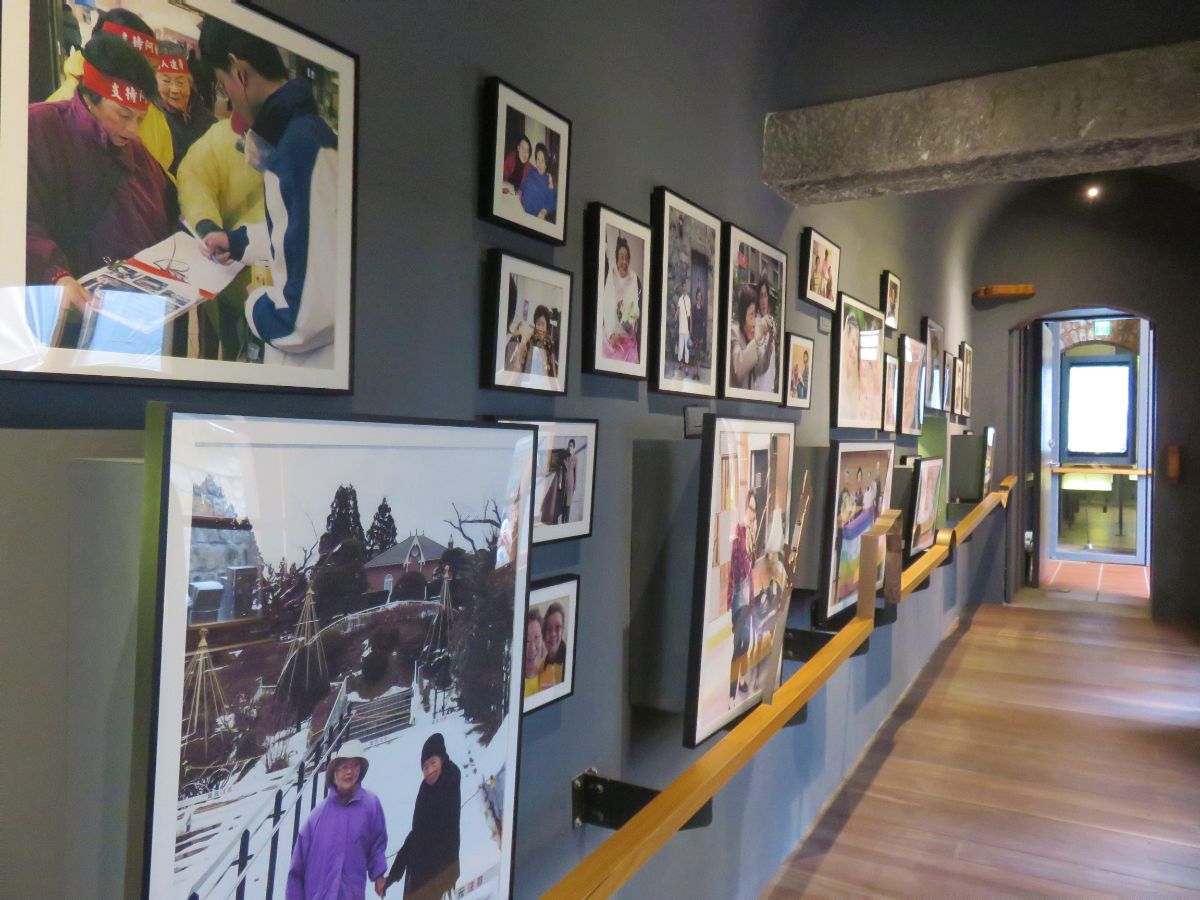
The carefully curated photographs begin to tell the stories of each Ama. The different materials used in this space are designed to convey the different sensations and feelings (hard, soft, warm, cool) that the women have felt over the years.
The main gallery: Permanent Exhibition on WWII ‘Comfort Women’
This first-floor exhibition unravels the history of ‘comfort women’ and Japanese occupation during the early 20th century.
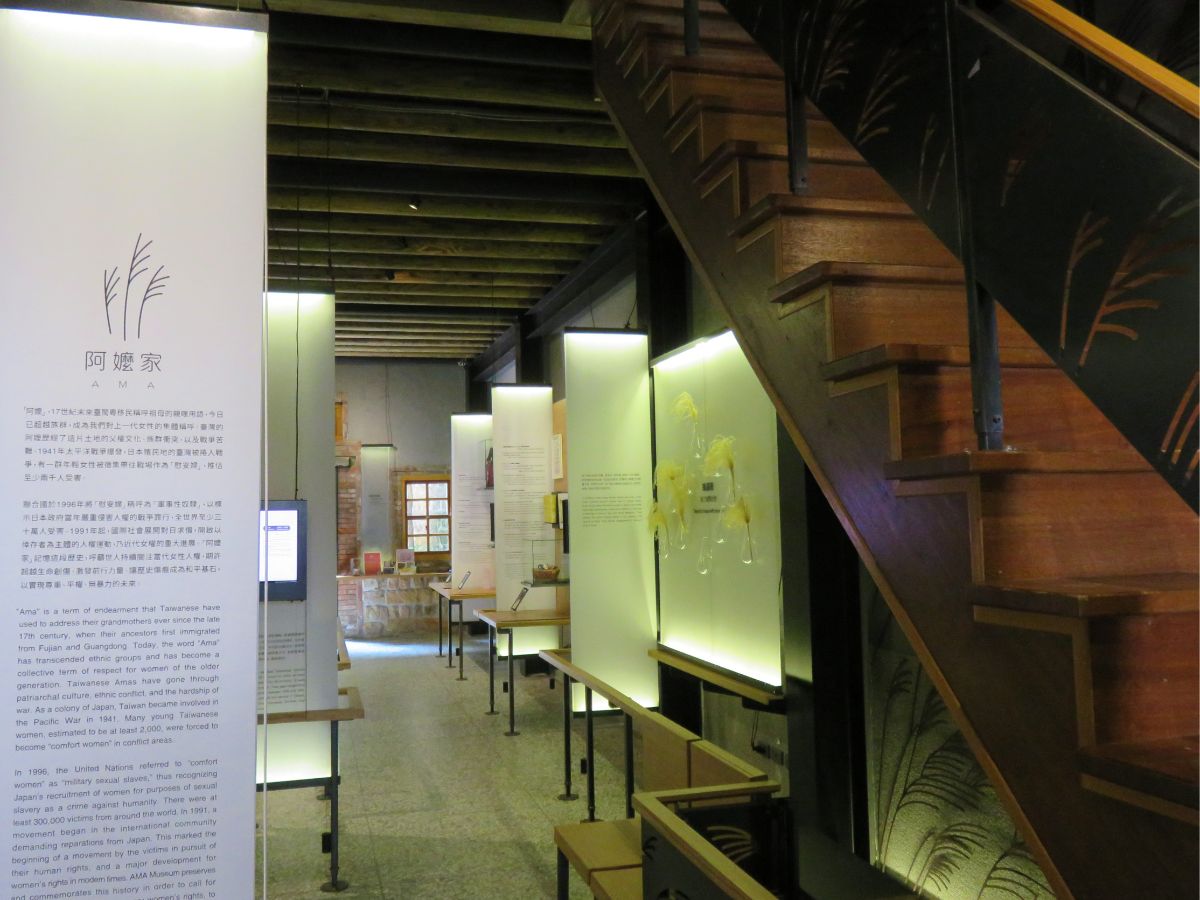
The moving – and sometimes devastating – stories of Amas are told through vibrant displays. Some of the survivors were kidnapped from their homes and others were tricked into thinking that they would be waitresses. Instead, they all ended up as ‘sex slaves’ used and manipulated by the Japanese military.
This exhibition also focuses on the international human rights campaign (1996-2016). A time when many of the survivors first spoke up about their experiences.
The Tree of Life
Tucked into a small brick courtyard at the back of the museum is The Tree of Life.
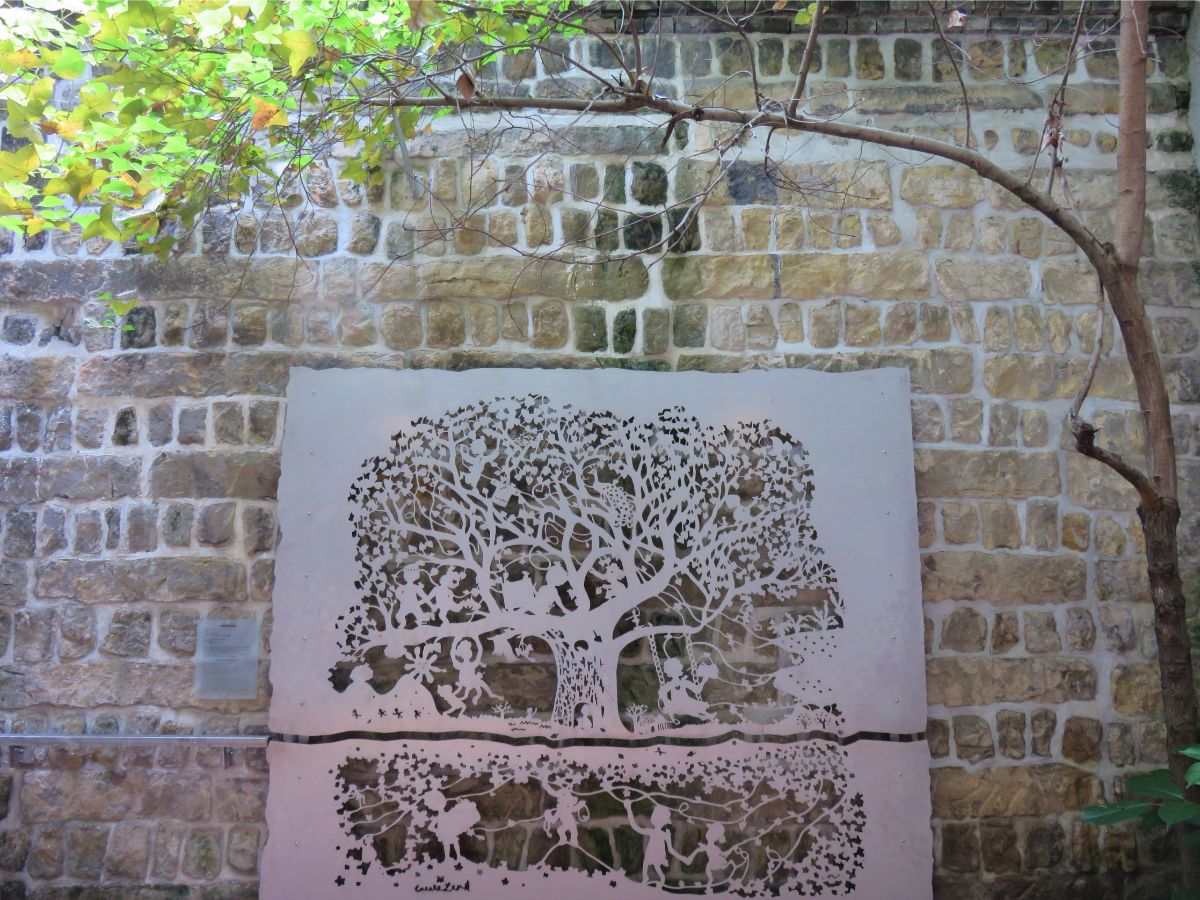
This beautiful and moving art piece dominates the small space and depicts the lives of four of the Amas shaded under a huge tree. After the powerful history lesson in the main exhibition, The Tree of Life courtyard is a tranquil place to sit, reflect and absorb.
Special Exhibitions on Human Rights
The 2nd floor of the Ama museum is dedicated to showcasing temporary exhibitions. The upstairs rooms regularly house exhibitions on other women affected by war including Anne Frank or survivors of war rape from other countries across the world.
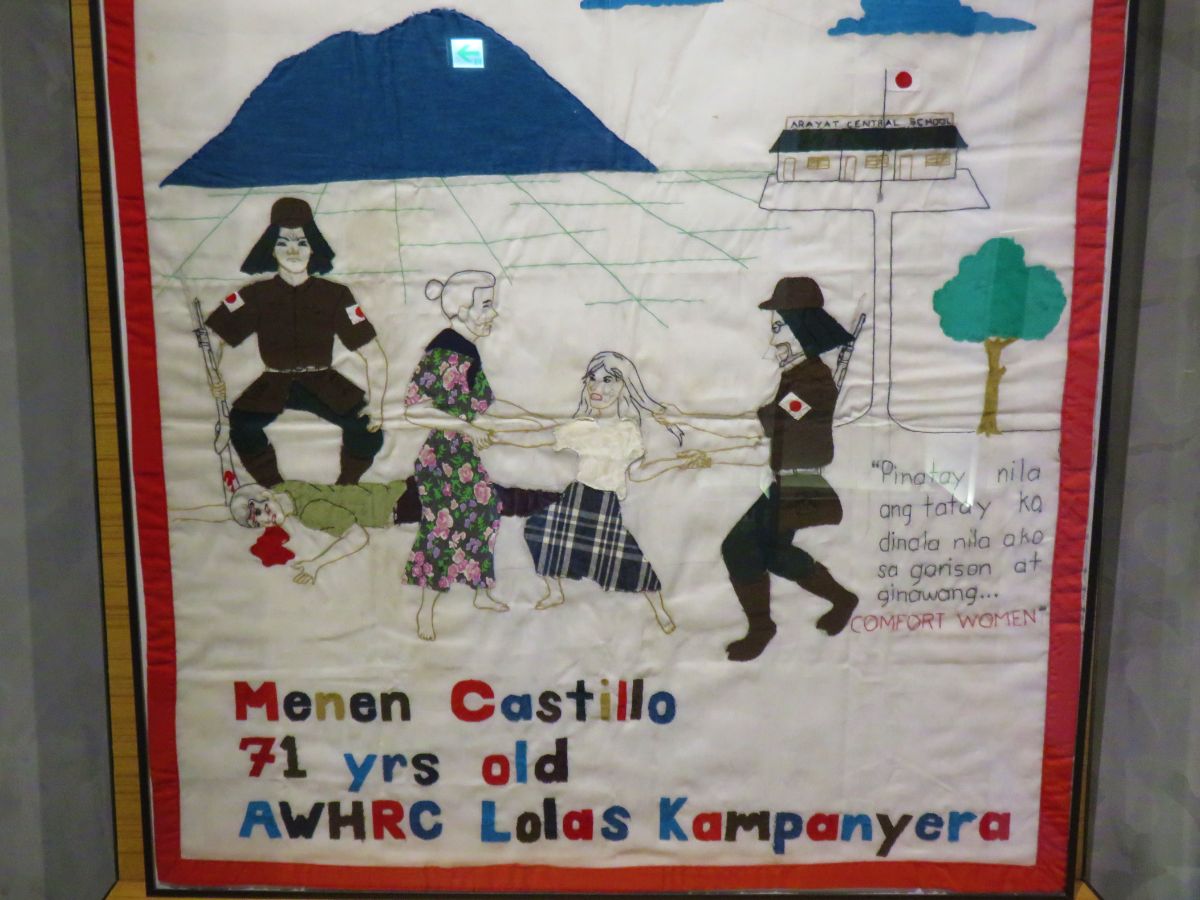
Audio-visual room
Every afternoon, a powerful documentary screens in the video room. Relaxing back on beanbags, you can hear the stories of the survivors told by the women themselves.
For me, the most powerful section of the documentary was hearing the Dutch-Australian survivor Jan Ruff O’Herne speak.
She spoke in English – my mother tongue. Like me, she is an expat living in Asia. Sadly, her young adult life was punctuated by her captivity by the Japanese military.
**Researching this post, I have seen that Jan Ruff O’Herne sadly passed away in August 2019. A few months after I last watched the documentary. If you are interested in learning more about this amazing woman, check out the video below:
Song of the Reed Walk
“A bruised reed he will not break, and a smouldering wick he will not snuff out. In faithfulness, he will bring forth justice.” Isaiah 42:3
Perhaps the most powerful visual display in the Ama Museum is the Song of the Reed Walk. Drawing influence from a biblical quote, this corridor contains more than one thousand transparent cylinders. Each representing one of the women of the thousands of ‘comfort women’.
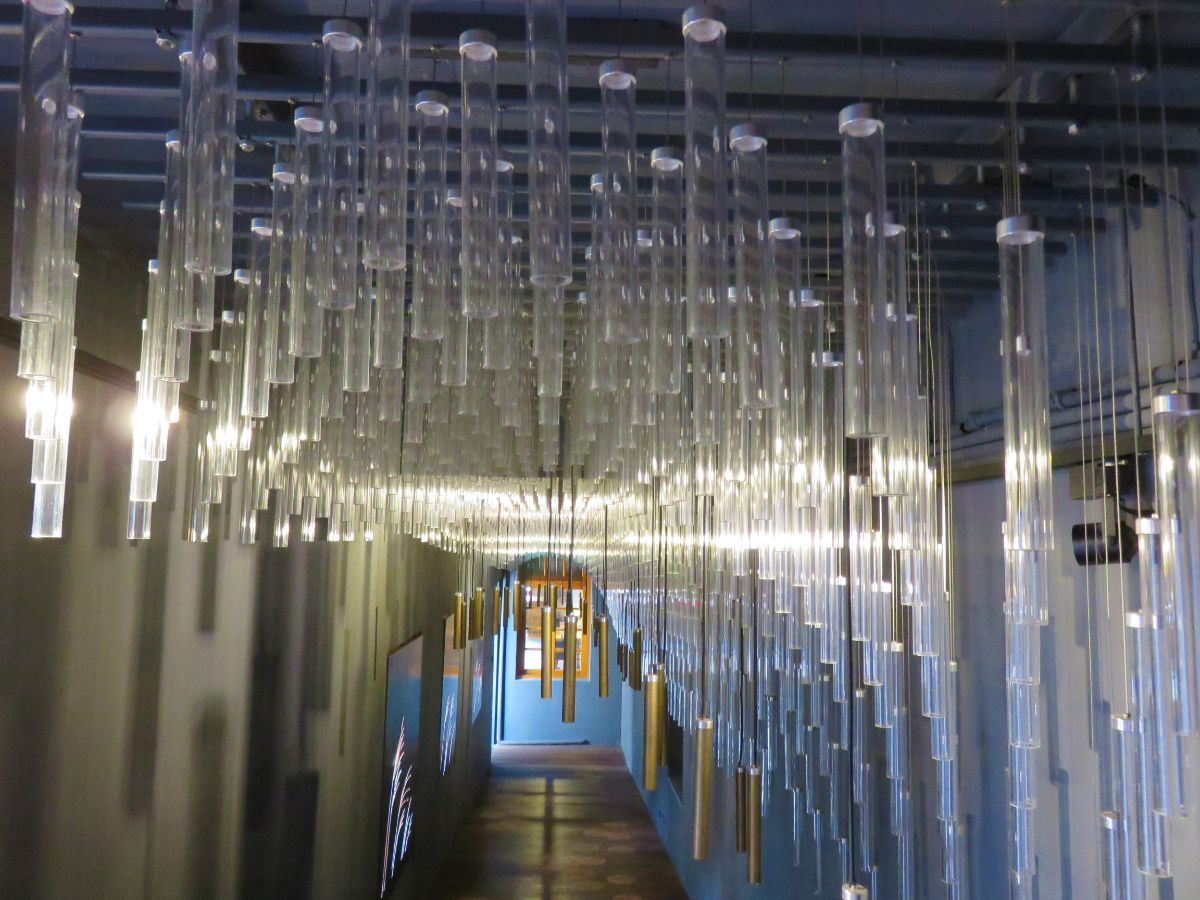
The 59 metal lamps contain the names of the survivors. As you hold the palm of your hand under the lamp, one of the women’s names in Chinese will be projected on to your hand. So that you can hold her name and join her
Women’s Power Space
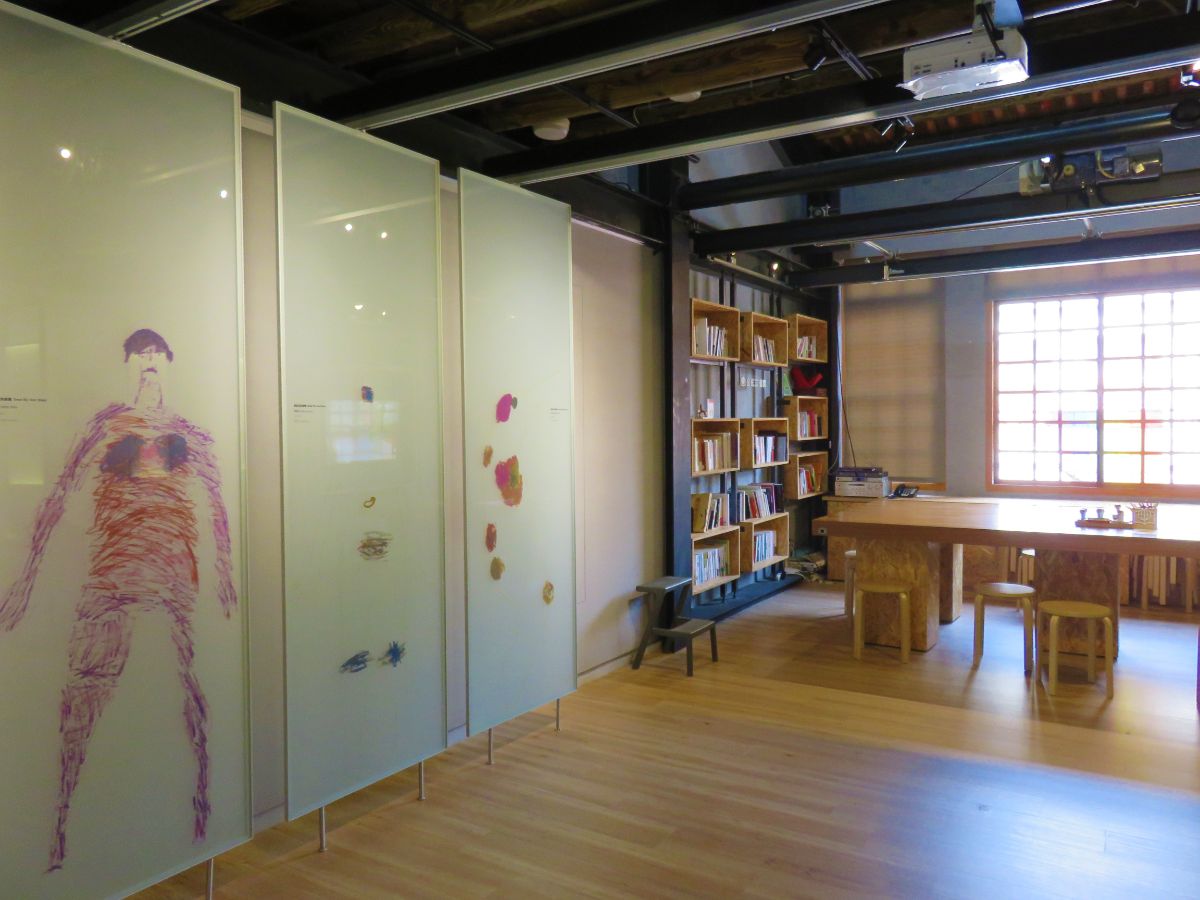
Between 1996 and 2012, former ‘comfort women’ produced over 178 pieces of art in memory of their unique and tragic history. The art workshops run by the TWRF organisation were therapeutic in nature but also important historically. Many of the pieces of art created by the amas have been submitted to the UNESCO Memory of the World Register as part of the Comfort Women collection. Preserving and documenting the lives of the amas for future generations.
Is the Ama Museum family-friendly?
Although the subject matter in the museum is harrowing and mature, the museum and cafe are both welcoming and inclusive towards mothers and children. The museum has toilets, a baby changing room and a baby feeding space.
Small children could stay in the cafe with one parent whilst the other looks around the museum and then swap. Alternatively, there is a small park nearby.
Visiting with teenagers, the museum’s exhibitions will add a new dimension to their knowledge of WWII. The subject is difficult to absorb and most people will need some time to quietly reflect after a visit.
How to visit the Ama Museum in Taipei
Ama Museum Taipei
Chinese Name of Ama Museum : 阿嬤家-和平與女性人權館 |
| Hours:Wed-Sun 10am – 5pmClosed Mon/Tues |
| Telephone: 02 2553 7133 |
| Address in English : No. 256, Section 1, Dihua St, Datong District, Taipei City |
| Address in Chinese: 台北市大同區迪化街一段256號 |
Arriving by MRT: the museum is a 10-minute walk from Daqiaotou Station EXIT 1 (Zhonghe-Zinlu Line) and a 20 minute walk from Beiman Station Exit 2 (Songshan-Xindien Line).
Arriving by bus: Take the number 9, 206, 274 or 669 bus to Baoan Street Entrance Shop. Alternatively, take bus number 41, 206, 255, 641 and 669 and alight at the Taipei Bridge Stop.
More on Taipei and Taiwan
Find out more about our travels in Taiwan with our young children by exploring our in-depth posts on Awesome Things to do in Taipei with kids, 1-day road trip in Taiwan from Taipei to Hualien and Family-friendly things to do in Taroko National Park
If you like our content we’d love to keep in touch! Follow us on Facebook | Twitter | Pinterest or subscribe to our newsletter to keep up with the latest news from World for a Girl.

